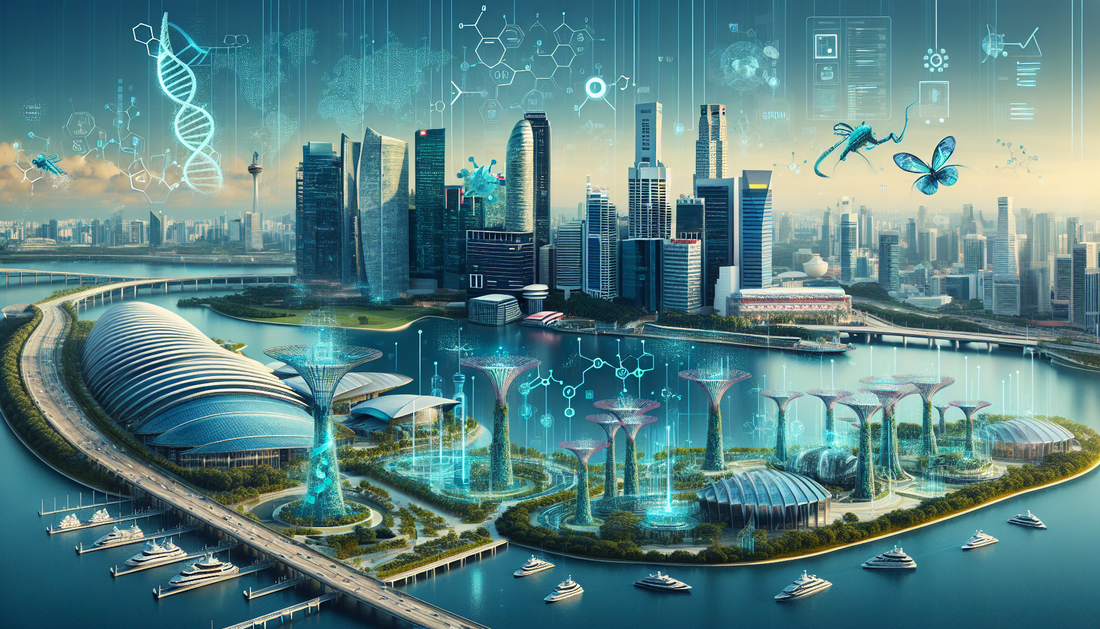
Singapore: A Leading Hub for Life Sciences Investment in 2024
CronkBot1.0 Summary NewsShare
Renowned for its vibrant and supportive ecosystem, Singapore is making waves as a premier hub for life sciences investment in 2024. This thriving industry hotspot is attracting global investors and innovators alike, drawn by the nation’s strategic initiatives and robust infrastructure.
- The Singaporean government continues to bolster the life sciences sector, enhancing its attractiveness with funding incentives and innovation grants. 🏦💡
- Biopolis, Singapore’s life sciences research cluster, remains a key player in nurturing collaborations among research institutions, biotech companies, and investors. 🧬🔬
- Industry leaders highlight Singapore’s prime location in Asia, offering easy access to emerging markets and established economies. 🌍✈️
- With the support of the Singapore Economic Development Board, the nation fosters an encouraging business environment, facilitating rapid growth and innovation. 📈
- Prominent figures in the industry, such as Dr. Amy Khor, Senior Minister of State for Health, emphasize the government’s commitment to developing the sector further and providing cutting-edge healthcare solutions. 🏥
- A consistent increase in venture capital inflow is indicative of investor confidence in Singapore's life sciences potential. 📊💰
As Singapore solidifies its position as a leader in life sciences, it attracts significant international attention and investment, promising a remarkable future for the industry.
Singapore has emerged as a leader in Asia-Pacific life sciences investments for 2024. With its dynamic ecosystem and strategic initiatives, the island city-state stands at the forefront of this flourishing sector. Major investments and advancements in life sciences research are shaping Singapore’s future, attracting companies and talent from across the globe.
Life sciences encompass a broad array of fields, including biotechnology, pharmaceuticals, and biomedical research. Singapore has leveraged its strong economic climate and pro-business policies to become a hub for innovation in these areas. The government’s forward-thinking approach and significant funding have played a vital role in building this ecosystem. This has made Singapore a preferred destination for life sciences companies and investors alike.
One of the key contributors to the sector's growth is Enterprise Singapore, a government agency focused on promoting enterprise development. The organization has introduced various initiatives, such as major funding grants and partnership programs, designed to support start-ups and small to medium enterprises (SMEs) in the life sciences realm. Such initiatives have encouraged bold innovation and the development of pioneering technologies.
Strategic Investments in Life Sciences
Singapore's prowess in the life sciences sector can be attributed to its strategic focus on creating a robust investment ecosystem. In recent years, the government, alongside private investors, has poured substantial funds into research and development (R&D) projects. These investments have led to concrete outcomes, including the establishment of research centers equipped with state-of-the-art technologies.
Parkway Pantai, a leading healthcare group in Asia, has also played a significant role. The company operates more than 30 hospitals across Asia, with a substantial presence in Singapore. This healthcare infrastructure acts as a critical component of the life sciences ecosystem, facilitating clinical trials and advanced medical research. Furthermore, Singapore's world-renowned A*STAR (Agency for Science, Technology and Research) is instrumental in steering collaborative projects that fuse academia, industries, and healthcare systems.
Timeline of Key Developments
The evolution of life sciences in Singapore can be traced back to early 2000s, when the government initiated several science and technology blueprints. These blueprints set the stage for developing cutting-edge biomedical districts, one of which is the unique Biopolis. Inaugurated in 2003, Biopolis was designed to house a convergence of scientists, researchers, and life sciences companies, fostering a culture of collaboration.
Fast forward to 2020, during the COVID-19 pandemic, Singapore’s life sciences sector demonstrated its mettle. Companies quickly adapted to the challenges, speeding up research into diagnostics, vaccines, and therapeutics. By 2024, these efforts have matured significantly, contributing to Singapore’s recognition as a premier destination for life sciences investments in the Asia-Pacific region.
Future Outlook in Life Sciences
Looking ahead, Singapore aims to maintain its momentum in the sector by continuing to invest and innovate. The Research, Innovation and Enterprise (RIE) Plan 2025 outlines a roadmap for sustained growth, emphasizing life sciences as a pillar of technological and economic development. Key areas of focus include precision medicine, the acceleration of drug discovery, and the increase of local biopharmaceutical manufacturing capabilities.
Global players are taking note of Singapore's vibrant ecosystem. Companies like Thermo Fisher Scientific and Johnson & Johnson have expanded their operations within the country, further establishing it as a key node in the global life sciences network. These collaborations symbolize the intertwined relationship between Singapore’s national policy and global industry trends.
Locations Poised for Growth
Geographically, Singapore’s biomedical hubs remain focal points for investment and development. Biopolis continues to attract research talent and companies from around the world. In proximity, Mediapolis caters to companies that blend media technology with innovations in health. Additionally, the Tuas Biomedical Park is dedicated to high-tech manufacturing processes, increasingly crucial in supporting the sector's overall growth.
With such foundational elements in place, Singapore is not just riding the wave of biomedical advancements but is actively shaping the future trajectories of life sciences. The country’s ability to integrate policy, infrastructure, and innovation sets a benchmark for others in Asia-Pacific and beyond.











